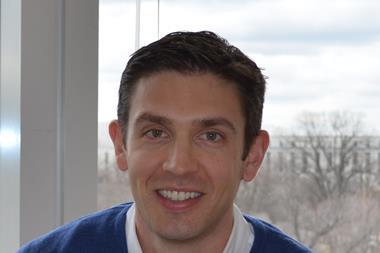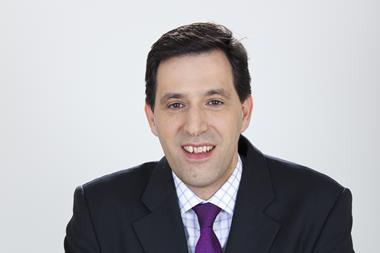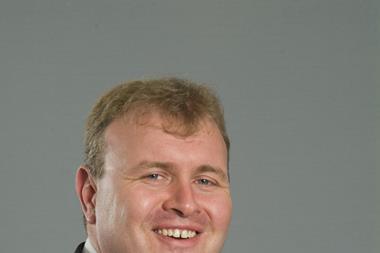Debate continues over the reasons for the world’s recent weather disasters, but risk managers must have a clear position on planning for the unknown
There’s no doubt about it: Earth is getting hotter by the day. The past three decades have been warmer than any decade since 1850, while nine of the 10 warmest years on record since 1880 were between 2000 and 2012, according to the International Panel on Climate Change.
Over the coming decades, scientists believe there will be further increases in tropical cyclone maximum wind speed and rain rates, as well as more frequent and severe events, particularly heatwaves, droughts and precipitation.
While the arguments for and against climate change rage on, there seems to be relatively little argument from the scientific community, business and government that such extreme weather is changing the way businesses need to approach decisions on environmental risk.
A wait-and-see approach is no longer an option, according to experts. But with risk managers facing ever-increasing bills for managing such risks, many wonder what the future holds.
Last year proved to be yet another catastrophic year, with economic losses topping €94bn worldwide and the loss of more than 25,000 lives. The globe was battered by floods in Europe and Canada, severe windstorms in the US, UK and Europe, and wildfires and cyclones in Australia.
But despite such severe weather, scientists and reinsurers say catastrophic event losses were down on previous years. According to Swiss Re, insured losses from natural catastrophes and man-made disasters in 2013 are amount to €32bn – down from €58bn in 2012 – while insured losses from natural catastrophes alone are at least €27bn – down from €54bn.
Shift in perceptions
With the last ice age only 10,000 years ago, experts argue that recent extreme weather is neither a short-term phenomenon nor a permanent shift in weather patterns. Extreme changes in temperature and weather are not new, but perceptions are altering.
Veolia Water risk and business continuity manager Lenny-Baptiste Conil says: “We tend to have very short memories. Huge catastrophes happened in the past but we only remember the last one because it’s more vivid. Then you have inflation and other factors that make the financial loss of the past look smaller.”
Catlin chief science officer Mike Maran believes there have been fewer catastrophic events in the past year, but perceptions of the damage have shifted as a result of the extensive reporting of events.
“There are catastrophes being recorded quite a lot, and there seem to be a lot of them, but from what we’ve heard from other scientists there were less than previously,” he says. “It depends on where they occur. There don’t seem to have been an unusually high number of catastrophes. For example, the hurricane season last year was incredibly low.”
Aon Benfield head of Impact Forecasting Adam Podlaha agrees we are seeing a rise in the reporting of catastrophic events, rather than a rise in actual events.
“Now, we record everything, even small earthquakes we cannot hear or feel. The reporting of events is getting better and more frequent,” he says, adding: “There are also more places insured.”
Lack of certainty
But while climate change is often linked to the increases, or perceived increases, in natural catastrophes, Maran says there is no certainty, which makes planning more difficult.
“Most people would agree there’s no evidence that the recent weather catastrophes are a sign of climate change as opposed to normal extreme events. That doesn’t mean to say they’re not. It just means we can’t say, ‘Yes, of course they are’,” he says. “We’ve always had extreme events. That’s what they are: they occur from time to time.”
Experts believe that human activity appears to be having a greater impact on the overall affect of catastrophes. FERMA president and DLA Piper chief risk officer Julia Graham says: “Man has a tendency to build in places he shouldn’t build in, so in coastal areas and with an accumulation of potential exposures, which leads to some of the catastrophes we have endured.”
Conil says the concentration of wealth in urban areas has opened up businesses to unprecedented potential risks. “We concentrate more and more people and wealth in cities, so when something happens there, its impact is mechanically greater.
“With all the concrete and asphalt that is being laid in urban areas, any rain-related events are also more severe every year. Where there were water infiltrations, you now have run-off and that changes dramatically the impact of a simple heavy storm.”
Intersys director of risk management Cath Geyman says the locality of the events is also important. “We’re seeing more financial pain because the freak events are happening in areas that are much more developed than perhaps they were,” she says.
“It doesn’t make the news headlines or hurt the insurers or companies quite as much if the disasters occur in the middle the African sub-continent.”
Broader remit
Building resilience to withstand natural catastrophes requires much broader and more comprehensive business planning. Graham says business continuity and how organisations construct their plans is crucial. Risk managers need to work beyond the immediate horizon of their work and learn to think in different ways.
“When you look at natural catastrophe or disease, or other major events such as cyber, we can’t avoid networking and working with all of our stakeholders with a view to having proper resilience and response times in place. These are likely to look a bit different than they might have done years ago,” says Graham.
Geyman says that in the face of catastrophe, risk managers tend to have business continuity plans that focus on their immediate sites rather than at their extensive supply chain.
“The problem with a big organisation is that to maintain really good contingency plans for every single part of their supply chain, in-house and out-house, would cost an inordinate amount of money,” she says.
As 2014 rolls on, disasters have already struck in the form of prolonged flooding in the UK and extreme temperatures in Australia and the US. Geyman says it is time for risk managers to prepare for unknown catastrophes ahead, whatever the cost.
“Businesses need to find a way of triaging what is going to hurt the most if it fails during a catastrophe, and then focus their continuity plans on the most vulnerable points in their supply chain,” she says.
“The amount they spend on preparedness and contingency planning is proportionate to the values at risk from that point in the supply chain. You have a certain budget. You have limitations. Just make sure you spend it in the right places in the first place.”




















No comments yet